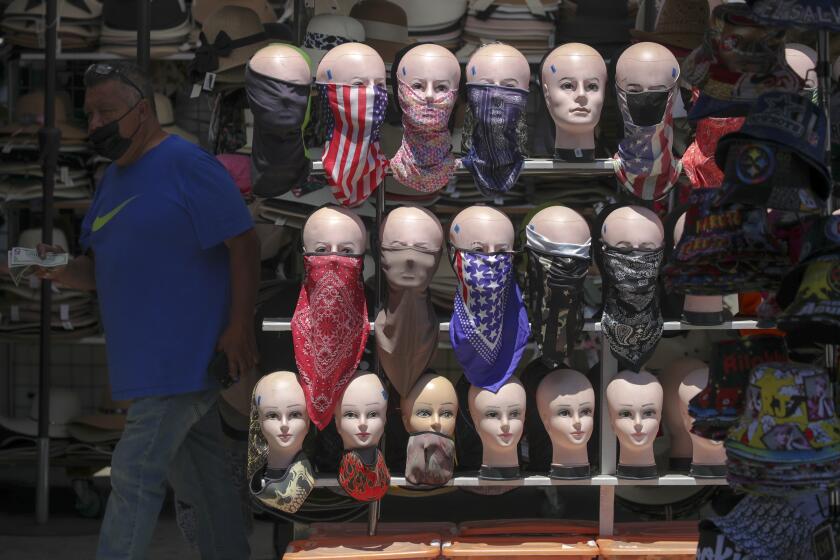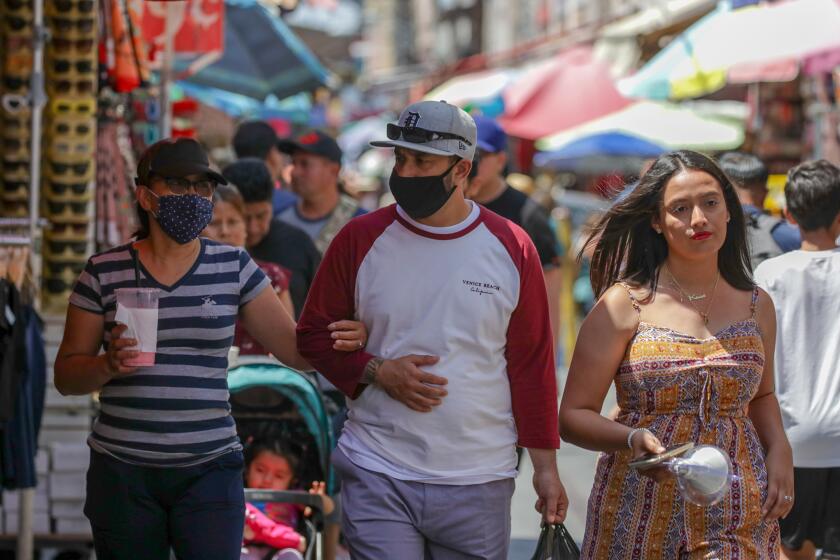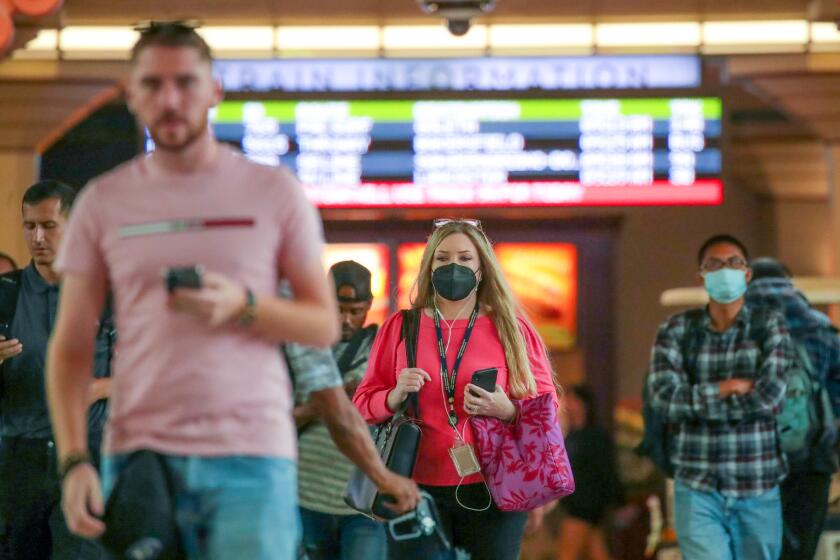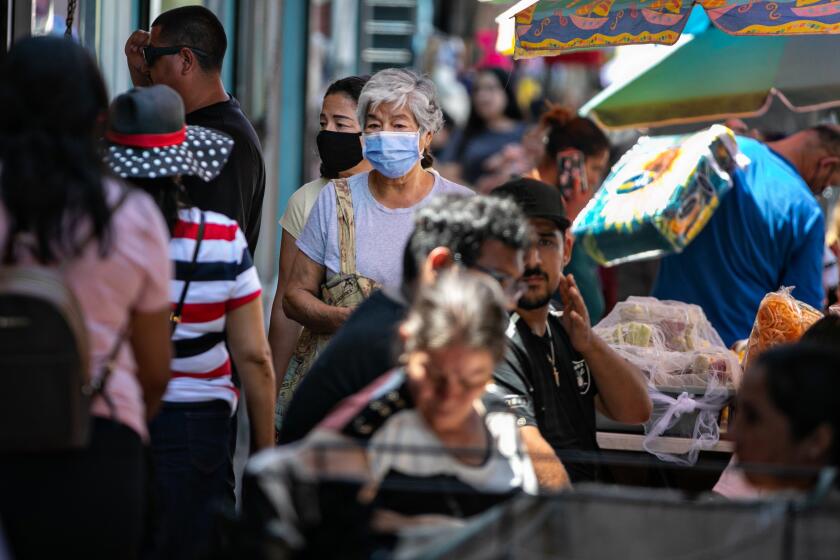Almost 9 in 10 Californians live in areas with high COVID-19 levels as BA.5 fuels infections
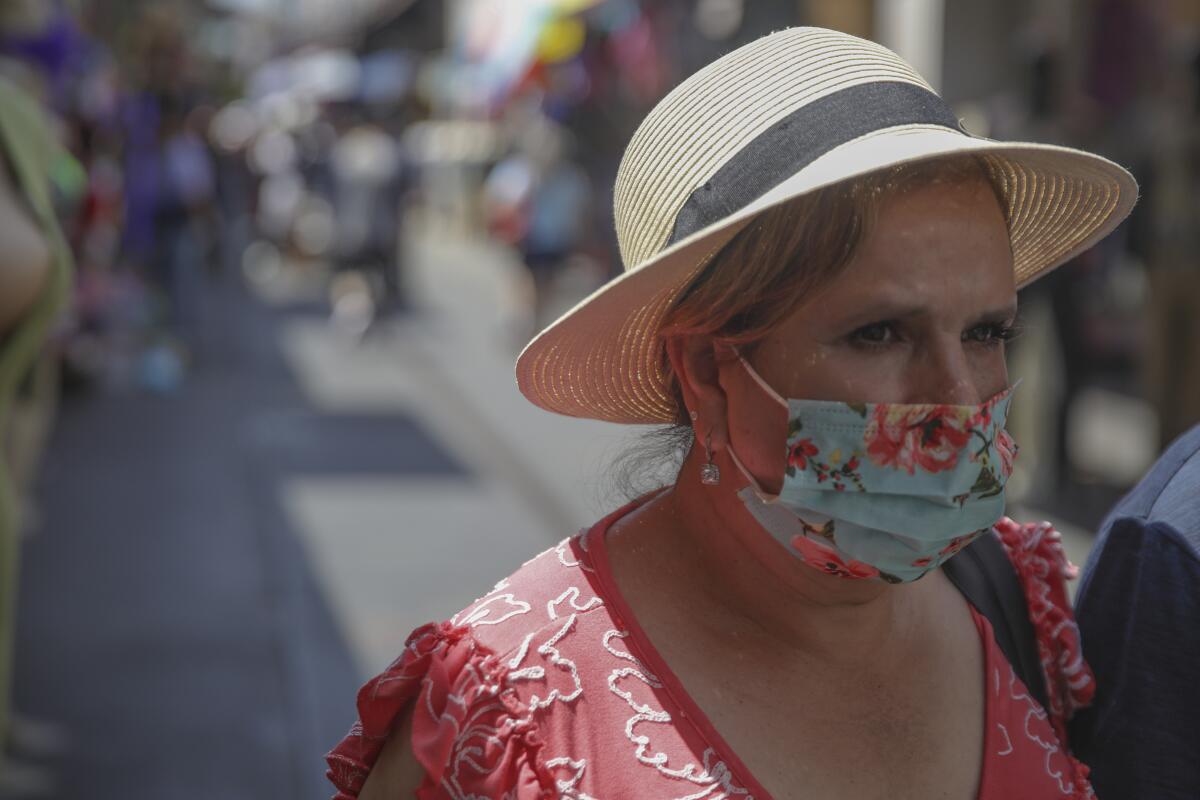
Nearly 9 in 10 Californians now live in counties with a high COVID-19 community level, in which the U.S. Centers for Disease Control and Prevention recommends universal masking in indoor public spaces.
The new developments underscore the increasing concerns about super-infectious subvariants of Omicron that have fueled a summer coronavirus wave.
With the coronavirus resurgent and cases and hospitalizations on the rise, Los Angeles is poised to become the first Southern California county to reinstate mandatory public indoor masking.
L.A. County officially entered the high community level Thursday. Should it remain there for the next two weeks, the county will reissue an indoor mask mandate with an effective date of July 29.
Officials recommend that employers take steps to reduce crowding and, if there’s a suspected outbreak, expand options for remote work.
No other California county has publicly tied its placement on the CDC’s community level scale to a renewal of masking orders. Along with L.A., 41 other counties are in the high level as of this week.
Most places recommend, but do not require, masking indoors while in public.
Besides Los Angeles County, the other counties that on Thursday entered the high COVID-19 community level category for the first time since mid-March are San Diego, Orange, Santa Barbara, Imperial and Tehama.
A total of 42 of California’s 58 counties are now in the high COVID-19 community level, in which 87% of California’s residents live. Just a week earlier, 41% of Californians lived in the 34 counties with a high COVID-19 community level.
Ventura County was the first Southern California county to enter the high COVID-19 community level, which it did on June 30.
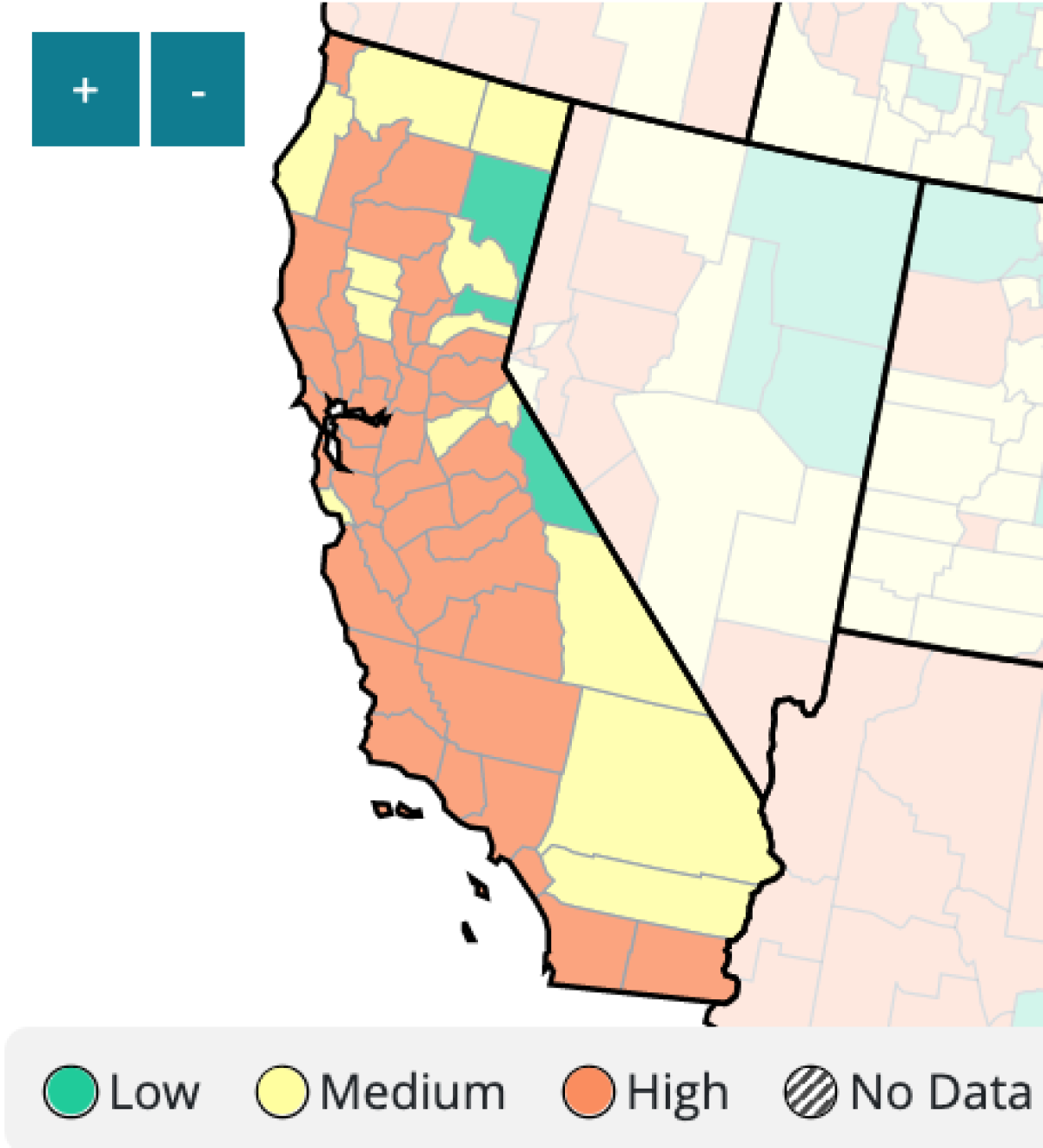
With case rates high, counties are generally entering the high COVID-19 community level when hospitalizations are exceeding a threshold of 10 new weekly coronavirus-positive hospitalizations for every 100,000 residents.
(There is also another threshold to enter the high COVID-19 community level — based on the percentage of staffed hospital inpatient beds occupied by COVID-19 patients — but counties are generally hitting the other threshold first.)
L.A. County is already experiencing a surge from the Omicron subvariant BA.5, but another strain causing concern in India has also been found locally.
The U.S. Centers for Disease Control and Prevention in February said it chose these measures as a threshold to enter the high COVID-19 community level because it provided a good predictor of deaths, new hospital admissions and use of intensive care units.
The system was set up as a way to help inform people when it was relatively more important to mask up in indoor public settings. “Layered prevention strategies — like staying up to date on vaccines and wearing masks — can help prevent severe disease and reduce strain on the healthcare system,” the CDC said in February.
The California Department of Public Health has strongly recommended universal masking in indoor public spaces for those age 2 and above ever since the state lifted a two-month-old mask order in February.
Coronavirus case rates in Los Angeles County are continuing to rise at a fast pace.
L.A. County is now averaging about 6,800 new coronavirus cases a day, representing a 35% week-over-week increase. That’s the highest week-over-week increase seen since the days leading up to the Memorial Day weekend.
If the county remains at the high community level for the next two weeks, a new masking order would be issued, with an effective date of July 29.
The latest rate is higher than the peak seen in last summer’s Delta wave, which rose to 3,500 cases a day. Last winter’s Omicron wave peaked at 42,000 cases a day.
On a per capita basis, L.A. County as of Friday was reporting 469 coronavirus cases a week for every 100,000 residents; a rate of 100 or more is considered high. The coronavirus case rate hasn’t been this high since early February.
A renewed mandate for Los Angeles County would apply indoors for those 2 and older at a familiar host of establishments and venues — including shared office space, manufacturing and retail settings, event spaces, restaurants and bars, gyms and yoga studios, educational settings and children’s programs.
Importantly, though, masks would not be required for those using outdoor spaces, as the risk of transmission in those settings is significantly lower than it is indoors.
Compared with its ancestors, the latest Omicron subvariant, BA.5, may have an enhanced ability to create a numerous copies of the coronavirus once it gets into human cells.
Patrons also would be able to take off their masks indoors when actively eating or drinking.
“We are not closing anything down. We are not asking people not to gather with the people they love. We are not asking you to forgo activities you love,” Los Angeles County Public Health Director Barbara Ferrer said last week. “We’re asking you to take a sensible step when there’s this much transmission, with a highly transmissible variant, to go ahead and put back on a well-fitting, high-filtration mask when you’re indoors around others. And I think that’s the prudent thing to do.”
The new wave has been fueled by BA.5, a super-infectious subvariant that has shown the ability to reinfect even those who recently contracted an earlier Omicron subvariant.
More to Read
Sign up for Essential California
The most important California stories and recommendations in your inbox every morning.
You may occasionally receive promotional content from the Los Angeles Times.
